I look differently at the world around me when I have a camera in my hand. I see beauty in places, in nature, or people that I would otherwise have missed. It is one of the reasons why I love photography; it makes life more beautiful.
Let me give an example. Last week, I was in Brussels for lunch, followed by several meetings with friends in cafes in the Grand Sablon area. But in the late afternoon, I had half an hour without any appointments before a dinner meeting. Outside it was dark, cold, and raining. The streets looked like this:
So I could have ordered another cold drink to stay warm and dry in the Jugendstil cafe on the Grand Sablon in Brussels that looked like this:
But instead, I chose to go for a walk in the rain.
There is something special about walking in old European cities in the rain that I find easier to express in photos than to describe in words. So I used the limited options of my smartphone camera to catch the shapes, colors, and reflections of Brussels at night in January.
Besides that camera, I carried a lifetime of memories from the countless visits to Brussels. I relived some of these when I passed ministries, palaces, hotels, and restaurants, where I have joined conferences and work meetings during the past thirty years.
And I always carry with me a love for history. I guess about eight out of ten books I read are history books. I can be fascinated by what has happened in each house, city, or county that I visit. I wonder if geographers who love history experience the past differently from actual historians. My brain seems to first organize memories and historical facts by place instead of by date or another context. Undoubtedly someone must have researched this, and I would love to read more about it. But in whatever way the brain functions, for me, walking anywhere in Europe is a great way to relive history.
So this is what I saw, through my smartphone camera, assisted by memories and a passion for local history.
Magritte
My first stop was the Magritte Museum, but I arrived just a minute too late. So my best and the only picture I took through one of the windows is this one:
If you someday visit Brussels, which is less than 90 minutes by train from Paris, this may be one of the many sights you might want to see.
Magritte's work frequently displays a collection of ordinary objects in an unusual context, giving new meanings to familiar things. If you are not familiar with his surrealistic paintings, take a look at this Pinterest site.
Magritte described the act of painting as:
"the art of putting colors side by side in such a way that their real aspect is effaced, so that familiar objects—the sky, people, trees, mountains, furniture, the stars, solid structures, graffiti—become united in a single poetically disciplined image. The poetry of this image dispenses with any symbolic significance, old or new."
Note that there is also the René Magritte Museum in Jette, just northwest of Brussels. It is the house where he lived and worked between 1930 and 1954.
Calder
Getting wetter in the rain, I continued walking to the nearby Mont des Arts (the 'art mountain') to see Alexander Calder's Whirling Ear. The US government commissioned it for the Universal Exhibition in Brussels in 1958 and, perhaps with a nod to the Cold War, installed it between the US and USSR pavilions.
After the exhibition, the sculpture was locked in the Museum of Modern Art's basement. It was only forty years later that it was restored and placed above the steps of the Albertine, where the Whirling Ear can now listen to the tones of the nearby Music Museum.
Alexander Calder is one of the greatest innovators of the twentieth century in plastic arts and sculpture. He fought the inertia of sculpture by making mobiles. I believe he did some beautiful, innovative works, but the Whirling Ear won't make it to my top five of his sculptures. On the other hand, I do like the setting in the small reflective pool in the heart of Brussel. Or better make that one of the many hearts of Brussels since it is a city that is strangely compartmentalized. When you visit Brussels for the first time, don't expect to fall for the instant charm that some European cities have. Brussels is a cluster of beautiful spots, but some are well hidden.
You can see in the photo that I didn't focus on Calder's moving ear. Instead, I chose the reflection of the houses in the small fountain.
Avenue Louise
I continued my short walk to the Avenue Louise, one of Brussels' most prestigious and expensive avenues, lined with high-end fashion stores and boutiques.
And very nearby, I passed the Apple store on Avenue de la Toison d'Or with its fantastic design. The glass curves around two sides of the corner building, extending to the entire double height of the interior.
Then walked back via the Rue de la Régence:
I arrived again at Grand Sablon. It is a lovely neighborhood with residents, cafes, and small businesses, while at the same time being a popular place to stroll and a tourist attraction. Surrounding the square are numerous antique stores, fashionable boutiques, hotels, restaurants, an auction house, and several pastry shops and well-known Belgian chocolatiers. In addition, the Grand Sablon hosts the Sablon Antiques and Books Market on the weekends. I always enjoy this neighborhood when I visit Brussels.
The square has a long history. In the early 14th century, the Crossbowmen's Guild built a modest chapel, setting off the area's transformation. Legend has it that the chapel became famous after a local devout woman named Beatrijs Soetkens had a vision in which the Virgin Mary instructed her to steal the miraculous statue of Onze-Lieve-Vrouw op 't Stocxken ("Our Lady on the little stick") in Antwerp, bring it to Brussels, and place it in the chapel of the Crossbowmen's Guild. She then stole the statue, and through a series of miraculous events, she was able to transport it to Brussels by boat in 1348. It was then solemnly placed in the chapel and venerated as the patron of the Guild. The Guild also promised to hold an annual procession, called an Ommegang, in which the statue was carried through Brussels. This Ommegang still takes place every year and has developed into an important religious and civil event in Brussels' annual calendar.
I made a digital sketch to end this post like I made one every day in 2020. It shows the Church of our Blessed Lady of the Salon:
I write this newsletter because I believe that together we can do better on this beautiful but fragile planet.
This newsletter is an independent production. Accordingly, I have never accepted any advertising offers. I also aim to make as many editions as possible available for free.
Support from those who can afford it makes this independent newsletter available to all. If you are a paying subscriber: thank you for your support!
If you are not, please consider supporting this initiative by taking a paid subscription.
If the cost of this newsletter ($6/month, $60/year) would create any financial strain, please stay on the free list; I value all readers.
The back page
Just one more, because I love the light, reflections, and colors on these pictures. The NH hotel on the Grand Sablon is one of the many hotels I have stayed in when visiting Brussels.
Notes:
https://www.lepainquotidien.com/be/en/locations/sablon/rue-des-sablons-11
https://www.musee-magritte-museum.be/en
https://en.wikipedia.org/wiki/René_Magritte
https://www.tate.org.uk/art/artists/alexander-calder-848/who-is-alexander-calder
https://en.wikipedia.org/wiki/Church_of_Our_Blessed_Lady_of_the_Sablon


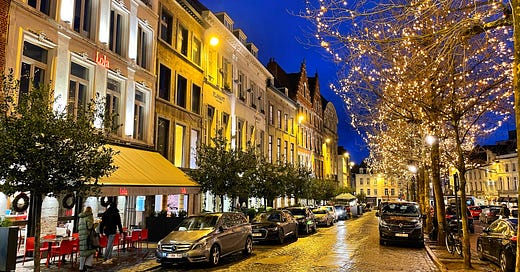





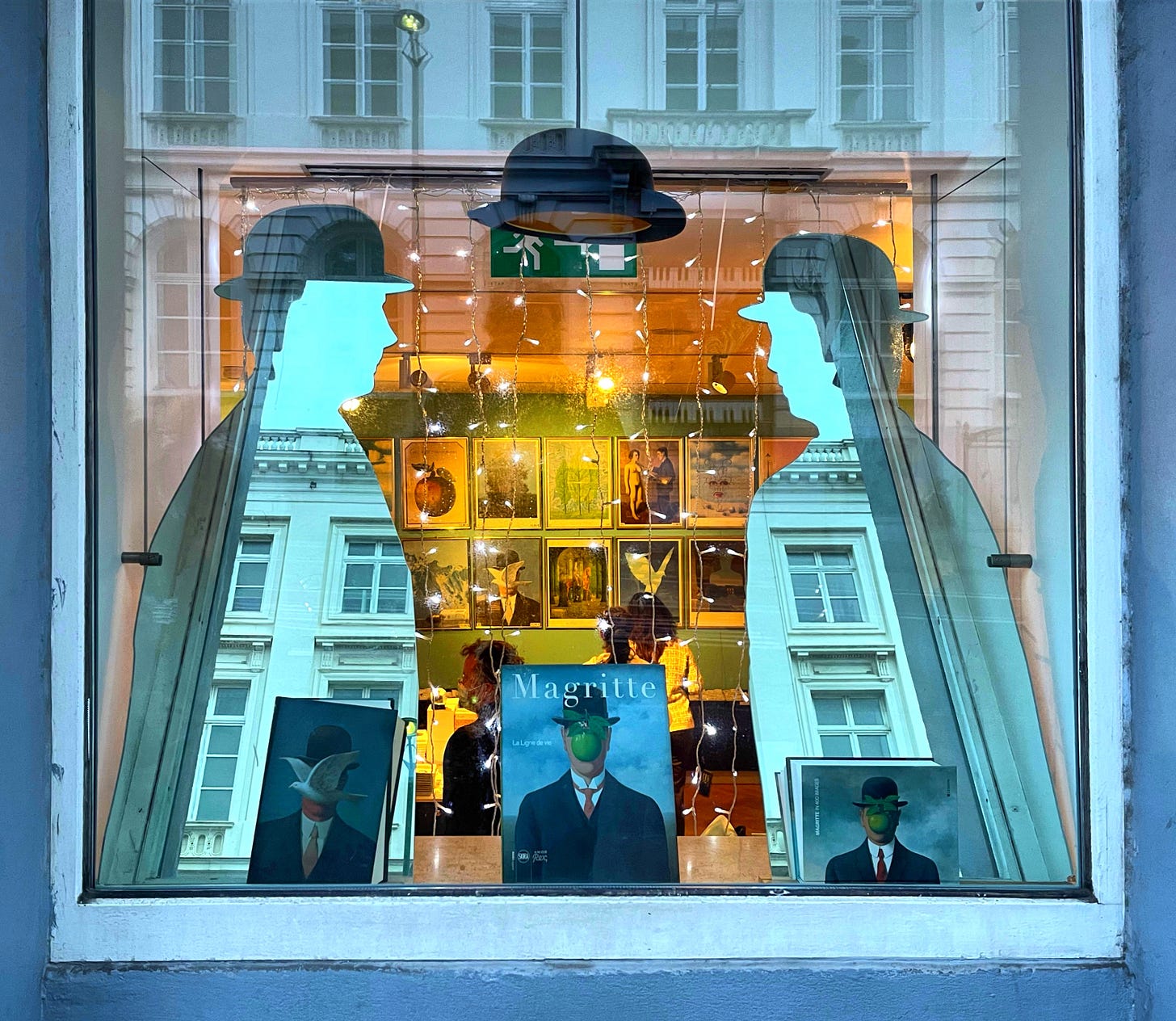
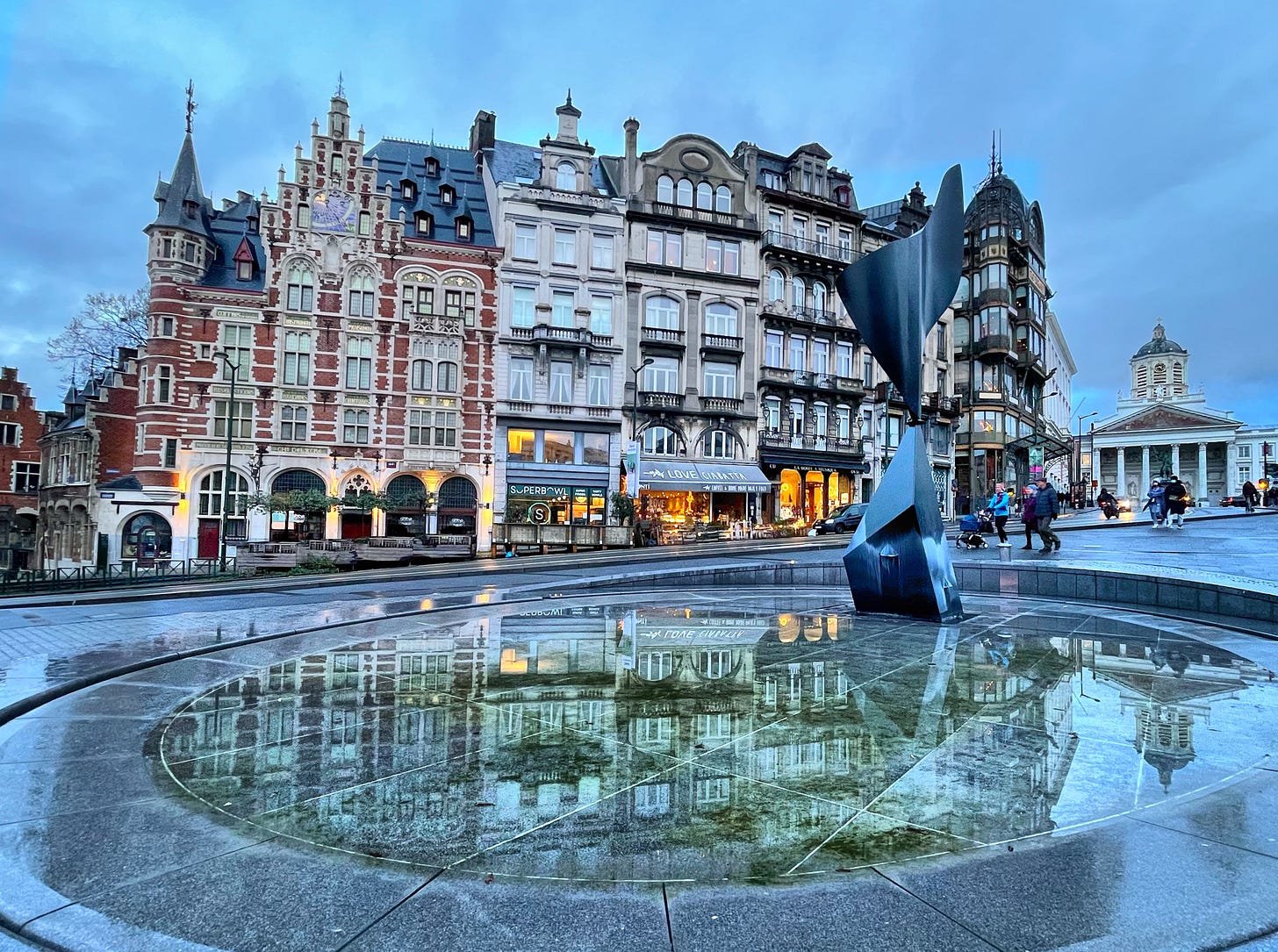

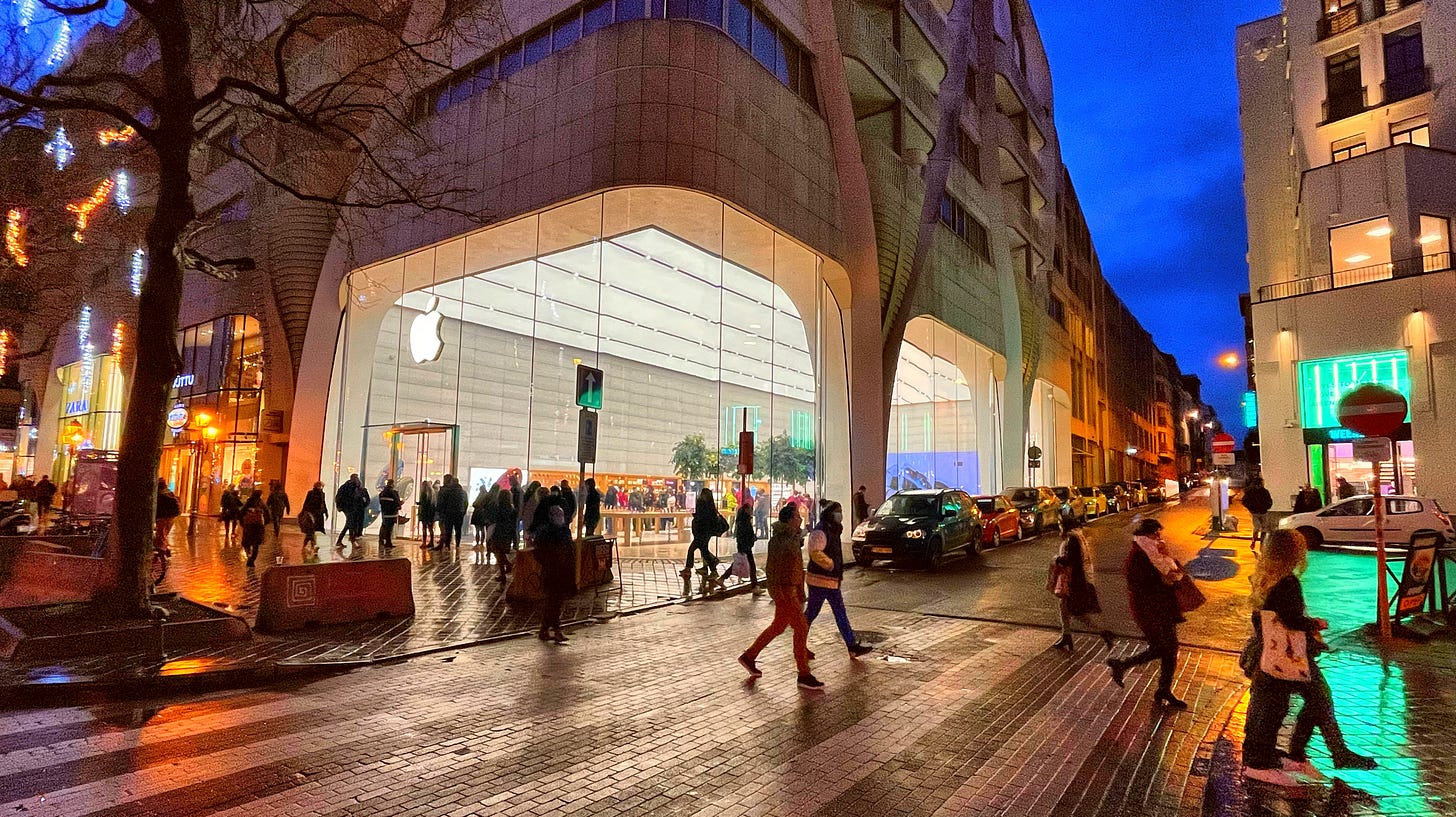
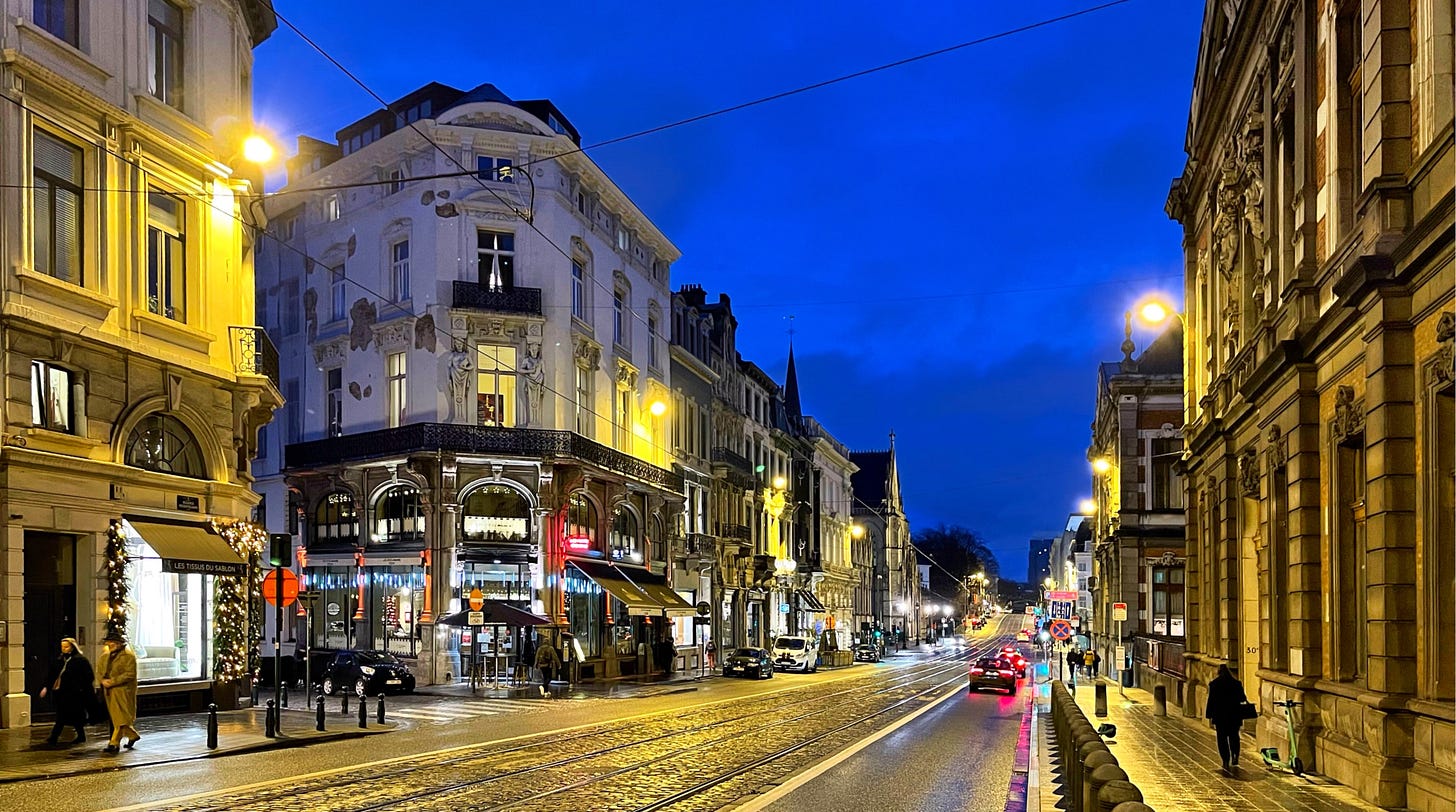

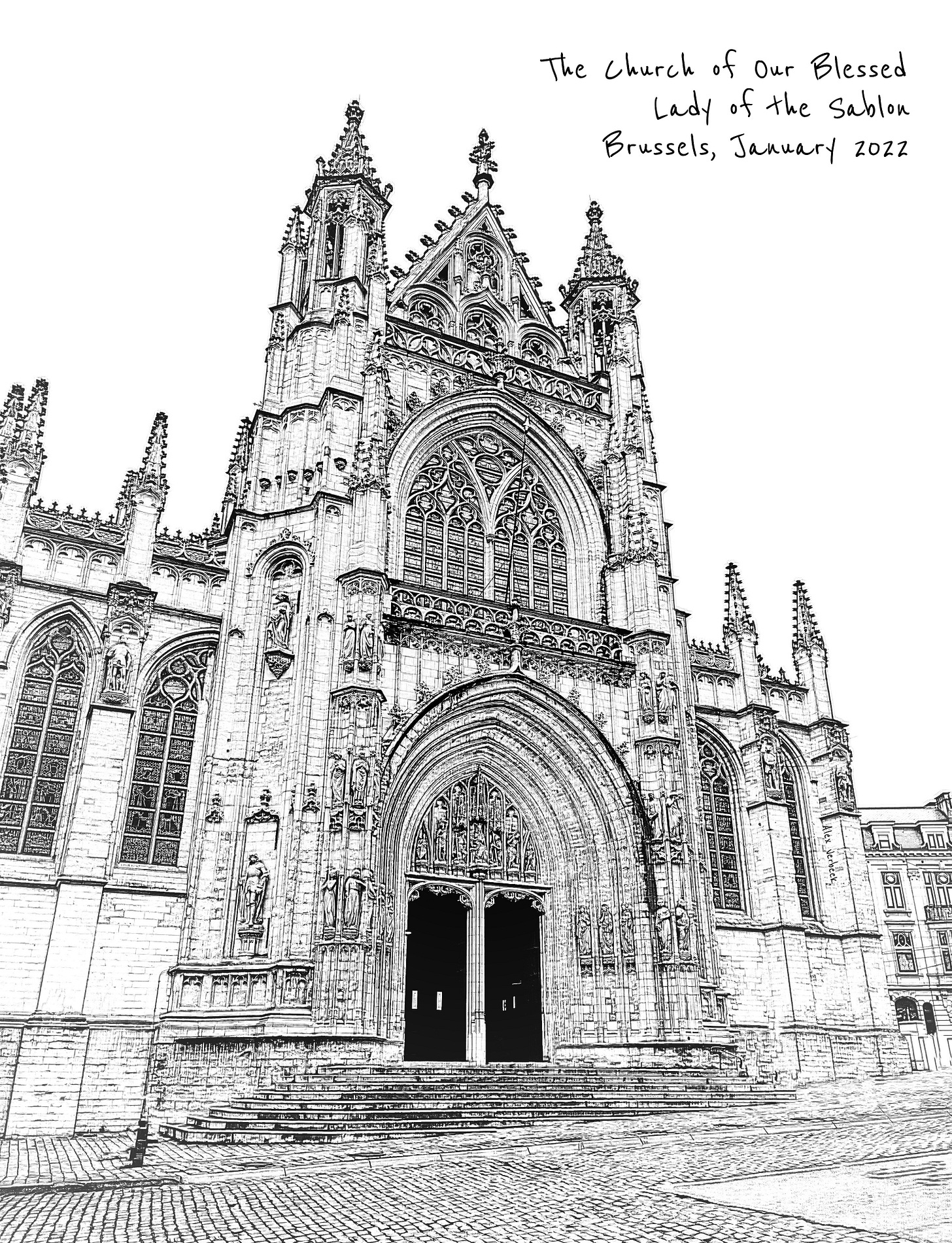


Thank you for reminding us of the beautiful things in this world and taking us for.this nice visit. I am thankful to be able to enjoy some of them live.
Alex, thank you for the lovely walk. The contrasts between the traditional building details and innovative Apple store, plus the awesome Magritte museum, provide a wonderful textured historical journey. I think we don’t truly appreciate the present without first knowing the history of the people and places.